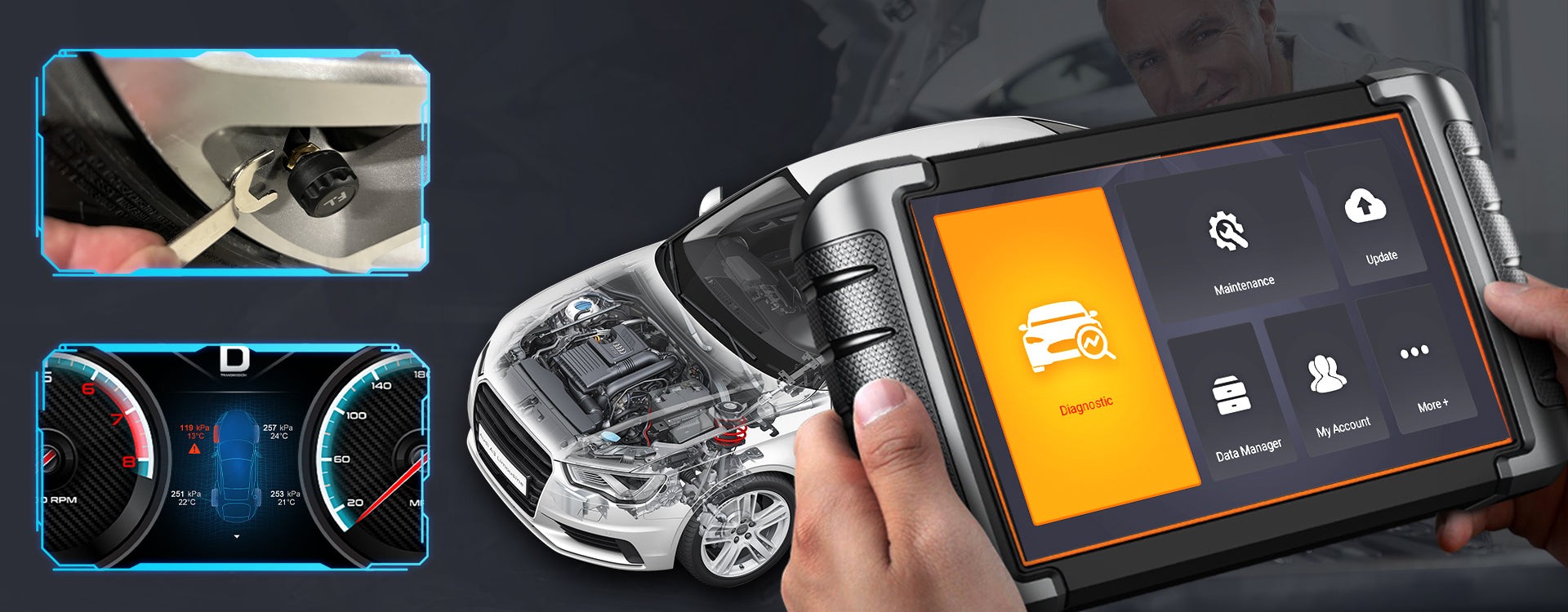The catalytic converter is a critical component in your vehicle’s emission control system, playing a vital role in reducing harmful pollutants released into the atmosphere. Ensuring its proper function is not only essential for environmental compliance but also for maintaining your vehicle’s optimal performance. A key tool in diagnosing the health of your catalytic converter is the OBD2 scanner.
This article delves into how an OBD2 scanner can be instrumental in detecting catalytic converter issues. We will explore the capabilities of OBD2 scanners in identifying problems, methods for testing your catalytic converter, understanding relevant OBD2 codes, and differentiating between issues related to the catalytic converter and oxygen sensors.
Can an OBD2 Scanner Detect a Failing Catalytic Converter?
Yes, an OBD2 (On-Board Diagnostics II) scanner is designed to monitor various vehicle systems, including the catalytic converter, and can effectively detect malfunctions. Modern vehicles are equipped with sensors, including oxygen sensors placed before and after the catalytic converter. These sensors feed data to the vehicle’s engine control unit (ECU), which constantly monitors the catalytic converter’s efficiency.
When the catalytic converter’s performance drops below a certain threshold, the ECU recognizes this anomaly and triggers a diagnostic trouble code (DTC). This is where an OBD2 scanner becomes invaluable. By connecting an OBD2 scanner to your vehicle’s diagnostic port, you can retrieve these stored DTCs, gaining insight into potential catalytic converter problems.
Advanced OBD2 scanners, like the Foxwell NT706, offer enhanced diagnostic features. The Foxwell NT706 not only reads and interprets DTCs but also provides real-time data streaming. This allows you to observe live readings from the oxygen sensors and other related parameters, giving a dynamic view of the catalytic converter’s operation. Furthermore, the Foxwell NT706 often provides detailed descriptions of the codes, potential causes, and suggested remedies, streamlining the diagnostic process for catalytic converter issues.
How to Conduct a Catalytic Converter Test Using an OBD2 Scanner
Testing your catalytic converter involves a systematic approach, and an OBD2 scanner is a crucial tool in this process. Here’s a step-by-step guide:
-
OBD2 Scan for Trouble Codes: Begin by connecting your OBD2 scanner, such as the Foxwell NT706, to your vehicle’s OBD2 port, typically located under the dashboard on the driver’s side. Turn the ignition to the “key on, engine off” (KOEO) position. The scanner will then communicate with the vehicle’s computer and retrieve any stored DTCs. Pay close attention to codes related to catalytic converter efficiency, such as P0420 (Catalyst System Efficiency Below Threshold – Bank 1) and P0430 (Catalyst System Efficiency Below Threshold – Bank 2). The Foxwell NT706 will not only display these codes but also offer detailed explanations, aiding in initial diagnosis.
-
Exhaust Backpressure Test (Advanced): While an OBD2 scanner provides electronic diagnostics, a physical backpressure test offers mechanical insight. This test requires specialized tools to measure the exhaust pressure before and after the catalytic converter. Elevated backpressure downstream of the converter often indicates a blockage or internal failure. Although the Foxwell NT706 primarily focuses on electronic diagnostics, it can complement this test by providing data on related sensor readings, offering a more holistic view.
-
Temperature Test (Physical Inspection): Another practical test involves measuring the temperature difference across the catalytic converter. Using an infrared thermometer, measure the exhaust pipe temperature just before the catalytic converter (inlet) and just after (outlet). A properly functioning catalytic converter should exhibit a higher outlet temperature than inlet temperature when the engine is warm and running. This temperature increase is due to the exothermic chemical reactions occurring within the converter. The Foxwell NT706 can monitor engine temperature and other related parameters, providing supporting data during this physical test.
-
Visual Inspection (Physical Check): Complementing electronic and temperature tests, a visual inspection of the catalytic converter is essential. Look for any signs of physical damage, such as dents, cracks, rust, or discoloration of the converter housing. Physical damage can impair the catalytic converter’s function. While the Foxwell NT706 excels in digital diagnostics, combining its data with a thorough visual check ensures a comprehensive assessment of the catalytic converter’s overall condition.
Understanding OBD2 Codes for Catalytic Converter Issues
The OBD2 system employs a standardized set of codes to signal specific vehicle problems. When it comes to catalytic converters, certain codes are strong indicators of potential issues.
The most frequently encountered OBD2 codes pointing to catalytic converter problems are P0420 and P0430. P0420 indicates “Catalyst System Efficiency Below Threshold (Bank 1),” while P0430 signifies “Catalyst System Efficiency Below Threshold (Bank 2).” “Bank 1” refers to the side of the engine containing cylinder number one, and “Bank 2” refers to the opposite side in V-type engines. These codes are triggered when the downstream oxygen sensor detects that the catalytic converter is not efficiently reducing pollutants as expected.
It’s important to note that while P0420 and P0430 directly point to catalytic converter efficiency, the root cause might not always be the converter itself. Issues like exhaust leaks, faulty oxygen sensors, or engine problems can also lead to these codes.
The Foxwell NT706 OBD2 scanner is particularly useful in deciphering these codes. It provides not just the code itself but also detailed descriptions, potential causes, and even likely solutions. This in-depth information empowers vehicle owners and technicians to understand the problem better and take informed corrective actions. Using a scanner like the Foxwell NT706 can significantly speed up and improve the accuracy of diagnosing catalytic converter related issues.
Distinguishing Between a Bad O2 Sensor and a Catalytic Converter Problem
Determining whether a problem lies with a faulty oxygen (O2) sensor or the catalytic converter itself can sometimes be tricky, as their symptoms can overlap. However, using an OBD2 scanner like the Foxwell NT706 can greatly simplify this differentiation.
1. OBD2 Code Analysis: Start by retrieving DTCs using your OBD2 scanner. Codes like P0420 and P0430 strongly suggest catalytic converter efficiency issues. In contrast, codes ranging from P0130 to P0167 typically indicate problems with the O2 sensors themselves (e.g., P0130 – O2 Sensor Circuit Malfunction (Bank 1, Sensor 1)). While P0420/P0430 can sometimes be caused by O2 sensor issues, codes directly pointing to O2 sensors are more indicative of sensor-specific faults.
2. Symptom Observation: Pay attention to your vehicle’s symptoms. A failing catalytic converter often manifests as reduced engine power, a noticeable sulfur or rotten egg smell from the exhaust, and potentially increased emissions test failures. Bad O2 sensors can lead to symptoms like poor fuel economy, rough idling, engine hesitation, and potentially a check engine light. However, these symptoms are not always definitive.
3. Live Data Monitoring with OBD2 Scanner: The Foxwell NT706 and similar advanced scanners offer the capability to monitor live sensor data. Focus on the readings from the upstream O2 sensor (before the catalytic converter) and the downstream O2 sensor (after the catalytic converter). In a properly functioning system, the upstream sensor should show fluctuating readings as it monitors and adjusts fuel mixture, while the downstream sensor should show more stable readings, indicating the catalytic converter is cleaning the exhaust. If both sensors show similar fluctuating patterns, it may suggest the catalytic converter is not functioning efficiently, or there’s an O2 sensor issue affecting readings.
4. Component Testing (Isolation): To definitively isolate the issue, individual component testing might be necessary. This could involve testing the O2 sensors’ response time and heater circuit resistance. However, with the detailed data provided by the Foxwell NT706, you can often narrow down the problem significantly without extensive physical testing, making the diagnostic process more efficient.
Conclusion: OBD2 Scanners – Essential for Catalytic Converter Diagnostics
An OBD2 scanner is an indispensable tool for diagnosing catalytic converter problems effectively. By understanding how to utilize OBD2 scanners, interpret diagnostic trouble codes, and perform supplementary tests, you can gain valuable insights into your vehicle’s catalytic converter health.
Regular vehicle maintenance and prompt attention to warning signs, especially check engine lights and OBD2 codes related to catalytic converter efficiency, are crucial. Addressing issues early can prevent further damage and ensure your vehicle operates efficiently and remains compliant with emission regulations.
The Foxwell NT706, with its user-friendly interface and comprehensive diagnostic capabilities, represents a valuable asset for both vehicle owners and automotive professionals in diagnosing and resolving catalytic converter and other vehicle system issues.
FAQs
How can I clean a catalytic converter without removing it?
You can attempt to clean a clogged catalytic converter using specialized catalytic converter cleaner additives available in the market. These are typically added to your fuel tank and work by dissolving carbon deposits as you drive. However, severe clogs may require professional cleaning or replacement.
What OBD2 codes indicate a clogged catalytic converter?
While codes P0420 and P0430 indicate catalytic converter inefficiency, they don’t specifically confirm a clog. However, a clogged converter can lead to inefficiency and trigger these codes. Other symptoms and tests are needed to confirm a clog.
If I get a P0420 code, will replacing O2 sensors fix it?
Replacing oxygen sensors might resolve a P0420 code only if the sensors themselves are faulty and causing inaccurate readings. However, if the catalytic converter is genuinely failing or clogged, replacing O2 sensors will likely not fix the underlying issue, and the code will likely return. Proper diagnosis is crucial to determine the root cause.

